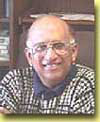|
CommentaryToo Many Vendors, Not Enough CustomersBy : Jim Pinto,San Diego, CA. USA
The original versions of this article was published in |

After '97 in Anaheim, CA., when we shifted to the format that emphasized technical sessions, ISA moved back to the "pure" exhibition format this year at the Houston Astrohall. At the TechExpo in California, everybody had to have a uni-size booth (so the bigger companies took several booths). Houston meant a return to the Texas-sized big-budget-booths. It was déjà vu - with much ado about nothing. Because, try what we may, we don't seem to be able to bring out the Customers. My estimate of the Vendor:Customer ratio is still 80:20. Of course, in an incestuous business, lots of vendors are other people's customers so it's not all a waste of time.
And, speaking of the big-guys - there are only 7 now : Siebe, Fisher/Rosemount (Emerson), Honeywell, Rockwell, Siemens, Yokogawa and ABB. Elsag-Bailey was just bought by ABB, (announced 14 October '98) making that combination the largest automation business today. One wonders if there was some element of pre-cognition here, because the big Elsag-Bailey booth was right next to their new parent ABB, with the Bailey guys looking somewhat docile next to their proud, new colleagues. ABB had previously bought Taylor (a once proud participant in the ISA big-guy extravaganza) through their then-parent Combustion Engineering - I had called them ABB-CE - so, will they now be called ABB-CE-EB?
While everyone knew that Elsag-Bailey was for sale, no one knew who would buy it - though, of course, everyone knew it would be one of the seven big-guys mentioned. Well, six - because the Japanese don't know how to make acquisitions. I'm told that Yokogawa did look at the prospectus in great detail, but then no one expected them to make a serious bid - heck, they will continue for years to pore over the marketing information they got for nothing. Everyone thought it would be Siemens, because of the natural tie-in with Hartman & Braun in Europe and the Siemens drive for market-share. The news came in time for ISA - no one knew until the previous Wednesday - and then suddenly everyone knew. The ABB news release mentioned a price of $39.30 per share and all the would-be buyers quickly justified how unreasonably high that was and why they had only offered less than half. Of course, the natural question arises from these big-guy mergers - will there be further consolidation? Next year will there be a new, larger HoneyRock?
One must suppose that there is a lot of money in software, because Wonderware Studios is reported to have spent a budget of more $ 1m to put on an extravaganza which rivaled anything hitherto heard of in the instrumentation business. I'm told that nearly 5,000 people were shuttled by special charter buses to a party at the Houston Space Center for laser-light shows and lavish entertainment by Tanya Tucker and the Marshall Tucker Band. Happily, (as part of Siebe) the Eurotherm and Action Instruments logos were printed on the invitations and the colorful Action logo was prominent in the laser-light show. I can only hope that there is a direct correlation between the budget, the attendance and the continued growth of our Siebe companies.
The last decade of this century started with Foxboro, a floundering follower, being bought and turned into a new leader by the financial discipline of Siebe - an unknown maker of under-water diving suits and now, arguably, the largest automation supplier in the world. Emerson, the well-managed manufacturer of hardware hodge-podge, bought Rosemount and then Fisher Controls to vie for leadership in a global but fragmented business. Rockwell, the aerospace giant, suddenly sold off much of its military businesses and turned towards industrial automation through acquisition of privately-held Allen-Bradley. Several once mighty mavens melted into a miscellaneous mix - Taylor and George Kent and then Elsag-Bailey and Hartmann & Braun all became ABB. Parts of Leeds & Northrup were pieced off to Honeywell. Yokogawa, anxious for acquisitive growth like the others, started and then predictably unwound its joint-venture with Johnson, proving my prognostications that the Japanese don't know how to acquire. Once proud PLC-leaders like Texas Instruments and Modicon were sold off as adjunct-businesses: Siemens, anxious to expand its European leadership to the US, bought TI and is still a prime candidate for more US market-share; Modicon was bought by German AEG who fiddled with it for a while and then brought in partnership with French Groupe Schneider (already the owner of multiple French PLC-makers - Telemechanique, April, Merlin-Gerin) and then, in frustration, finally sold it all off to the French (proving the point that the only thing worse than being owned by the Germans or the French is being owned simultaneously by both).
One wonders if anyone really knows where anyone is going….
In Europe (Hannover Fair in Germany, Mesucora in France, HET Exhibition in the Netherlands, C&I in the UK) they somehow seem to have a better Customer:Vendor ratio and one actually does business in the booth. In the US, the primary motivation to be there is negative - the shame of NOT being there. So, ISA/98 in Houston was just that - another vendor-comparison data-point in the unfolding panorama of the industrial automation business.

|
Return to Index of all JimPinto Writings

 Return to JimPinto.com HomePage
Return to JimPinto.com HomePage
If you have ideas or suggestions to improve this site, contact: webmaster@jimpinto.com
Copyright 2000 : Jim Pinto, San Diego, CA, USA
